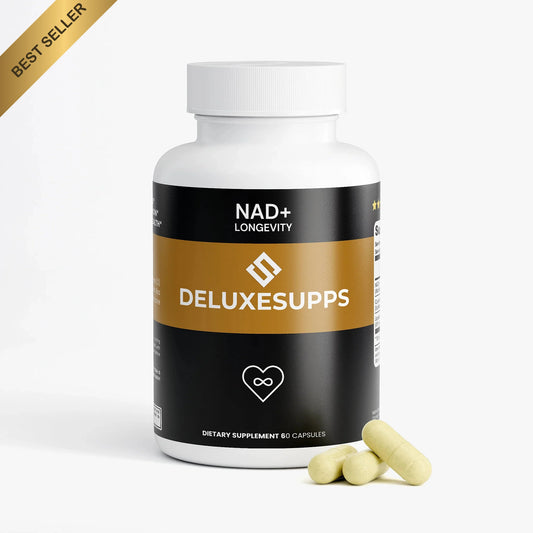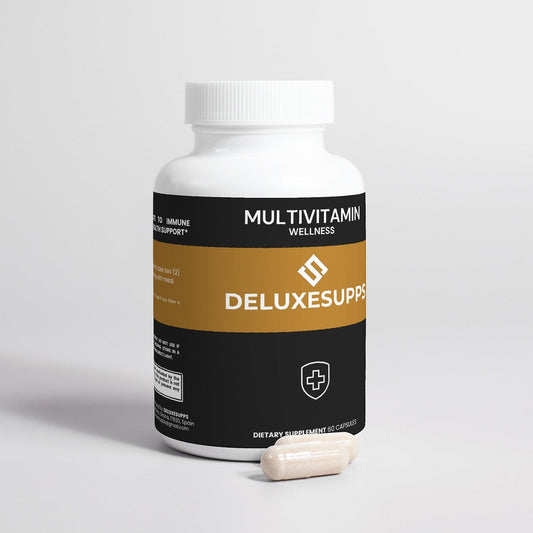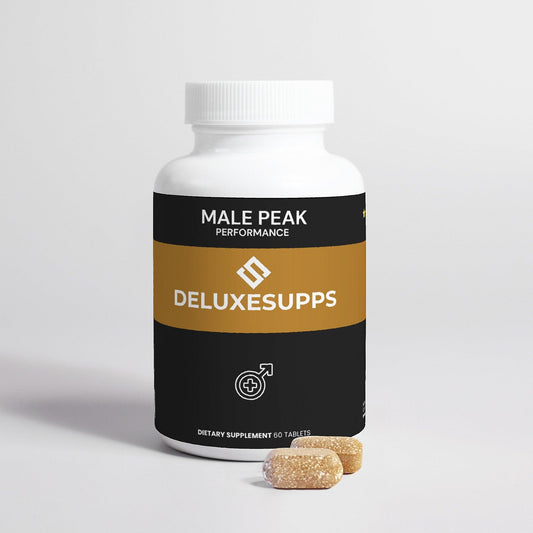Updated on: 2025-11-14
Table of Contents
- 1. Introduction to the zinc picolinate supplement
- 2. What is zinc picolinate and how does it compare to other zinc forms?
- 3. Best zinc picolinate supplement for absorption and bioavailability considerations
- 4. Zinc picolinate supplement 25 mg vs 50 mg dosage: choosing a label strength
- 5. Zinc picolinate supplement myths and facts for shoppers
- 6. Personal experience choosing a zinc picolinate supplement
- 7. When and how should I take a zinc picolinate supplement for best absorption?
- 8. Key takeaways on selecting a zinc picolinate supplement
- 9. Zinc picolinate supplement questions and answers
- 10. About the author
Introduction to the zinc picolinate supplement
A zinc picolinate supplement is a common way to provide dietary zinc in a chelated form. Many shoppers consider zinc picolinate capsules because they are compact, simple to take, and widely available. Others look for a zinc picolinate dietary supplement in tablets or powders, depending on preference. This guide explains how zinc picolinate compares to other forms, what “chelated” means in everyday terms, how to think about absorption and bioavailability, and how to compare 25 mg vs 50 mg strengths on product labels. It also clarifies common myths so you can navigate product pages, labels, and packaging with confidence.
What is zinc picolinate and how does it compare to other zinc forms?
Definition: What is zinc picolinate?
Zinc picolinate is a form of zinc in which zinc is bound to picolinic acid. This bond is often described as a chelation. In supplements, “chelated” refers to a structure where the mineral is attached to another compound. Many consumers choose a zinc picolinate supplement because chelation is associated with stability in the digestive environment and convenient capsule formats. Labels can list “zinc picolinate” as the source of zinc, and may show elemental zinc content per serving.
Comparison with other zinc forms
Common alternatives include zinc gluconate and other chelated options, such as zinc bisglycinate. A zinc gluconate supplement provides zinc bound to gluconic acid, while a chelated zinc supplement uses amino acids or organic acids to bind zinc. Each form has its own manufacturing process, taste profile, and typical dosage options. Because product formats differ, consumers often compare elements beyond chemistry: capsule or tablet size, number of servings per bottle, inactive ingredients, and label transparency. A zinc picolinate supplement is one of several widely used forms, and its suitability depends on your preference for format, serving size, and label clarity.
Best zinc picolinate supplement for absorption and bioavailability considerations
Shoppers frequently prioritize absorption and bioavailability when comparing products. In general language, “absorption” refers to how a nutrient enters the body from the digestive tract, while “bioavailability” refers to how much of that nutrient is available for use. Because many factors can influence these concepts, consumers often focus on practical product features that support a consistent routine.
Chelated zinc supplement overview
Many choose a chelated zinc supplement because chelation is associated with stability and predictable handling in the digestive tract. Zinc picolinate is one example of a chelated form. The capsule format can also matter. Some zinc picolinate capsules use minimal excipients, while others include flow agents to support manufacturing. Clear labels that specify the source (zinc picolinate), the amount of elemental zinc, and the serving size help you gauge whether a product aligns with your routine.
Notes on a zinc gluconate supplement
A zinc gluconate supplement remains a popular alternative. It is often found in lozenges, powders, and tablets, in addition to capsules. Some consumers select gluconate for its availability in specific formats or flavors. Others prefer picolinate because of capsule convenience. There is no single “best” option for every scenario. Instead, consider the form you can take consistently, the ingredient list you prefer, and the product presentation that fits your routine.
If you want to review broad product selections before deciding, you can browse the storefront, explore all products, check a focused minerals collection, or use search to compare label formats side by side.
Zinc picolinate supplement 25 mg vs 50 mg dosage: choosing a label strength
Shoppers often encounter two common strengths on labels: 25 mg and 50 mg. The number on the front of the bottle usually refers to the amount of elemental zinc per serving. When comparing a zinc picolinate supplement 25 mg vs 50 mg dosage, note the serving size and frequency on the Supplement Facts panel. A 25 mg product might specify one capsule per day, while a 50 mg product might specify a different serving pattern. The best approach is to read the label carefully and follow the manufacturer’s directions for use as stated on the product packaging.
Key factors that influence a dosage choice
- Label directions: Different brands provide different serving sizes and usage guidance. Always follow the product label.
- Elemental zinc: Confirm whether the stated milligrams represent elemental zinc per serving.
- Routine fit: Choose a serving pattern that you can follow consistently.
- Capsule count: Consider bottle size, total servings, and how long one bottle will last according to the label.
- Other ingredients: Review excipients for personal preferences, such as vegetarian capsules or minimal additives.
Zinc picolinate supplement myths and facts for shoppers
- Myth: “Only one zinc form works.”
Fact: Multiple forms exist, including picolinate and gluconate. Selection often depends on format preferences, label transparency, and personal routines. - Myth: “More milligrams always means better.”
Fact: Higher numbers on a label do not automatically suit every user. The label’s serving size and directions matter. Consistent use as directed on the product label is a practical consideration. - Myth: “Chelated zinc supplement means the same across all brands.”
Fact: “Chelated” describes a bonding approach, but formulations, excipients, and serving sizes can differ by brand. Read the Supplement Facts panel to compare. - Myth: “Capsules and tablets are identical.”
Fact: Capsules, tablets, and powders can feel different to take and may use different excipients. Choose a format you can use as directed. - Myth: “You can judge quality from one claim on the front label.”
Fact: The full Supplement Facts panel, ingredient list, and serving instructions provide the best overview of what you are buying.
Personal experience choosing a zinc picolinate supplement
When I first compared zinc products, I looked at two zinc picolinate capsules from different brands. Both listed elemental zinc per serving. One product showed 25 mg with one capsule daily. The other showed 50 mg with a different daily use direction. I noticed the 25 mg bottle had a smaller capsule size and fewer excipients, which suited my preference for simplicity. The 50 mg bottle offered a larger count and a competitive price per serving. I chose the product that fit my routine and label-reading style. The main lesson was straightforward: read the full panel slowly, confirm the elemental amount, and choose a serving pattern I could follow as directed on the label.
When and how should I take a zinc picolinate supplement for best absorption?
Shoppers often ask about timing, meals, and consistency. While individual needs vary, the most reliable starting point is the product label. Below are general, non-prescriptive considerations that consumers often weigh when aiming for a predictable routine.
Timing considerations
- Consistency: Many people aim to take their zinc picolinate supplement at the same time each day for routine adherence.
- With or without food: Some labels suggest taking zinc with food, while others do not. Follow the product label for that brand.
- Even spacing: If using a product with more than one serving per day, check the label for spacing guidance.
Interaction considerations to keep in mind
- Other minerals: Labels sometimes note spacing from other minerals. Read the fine print to see if your product provides any such guidance.
- Beverages and supplements: Check whether your label mentions any specific combinations to avoid or separate.
- Personal factors: If you have questions about a routine, it is prudent to consult a qualified professional. This content is informational and does not provide medical advice.
In short, let the label of your chosen zinc picolinate supplement guide the timing and method of use. That approach keeps usage consistent with manufacturer instructions.
Key takeaways on selecting a zinc picolinate supplement
- Know the form: Zinc picolinate is a chelated form; a zinc gluconate supplement is another widely used option. Choose the format and label presentation that suit your routine.
- Focus on the label: Confirm elemental zinc per serving, serving size, capsule count, and any usage directions.
- Absorption and bioavailability: Practical product choices—clear labeling, capsule size, and consistent routines—often matter to consumers.
- Dosage comparison: Weigh 25 mg vs 50 mg by checking the full panel, directions, and how the schedule fits your day.
- Capsules vs tablets: If you prefer zinc picolinate capsules, verify excipients, capsule material, and any additional ingredients.
Zinc picolinate supplement questions and answers
How does a zinc picolinate supplement relate to absorption and bioavailability?
Zinc picolinate is a chelated form. Many shoppers select chelated zinc supplements because they value stability and convenient capsules. Absorption and bioavailability can depend on several factors, including the specific formulation and personal routine. The most practical step is to choose a product with clear labeling that you can take as directed.
Are zinc picolinate capsules better than tablets?
Capsules and tablets each have trade-offs. Capsules may use fewer binders and often feel easier to swallow for some people. Tablets can allow for smaller packaging or certain release profiles. The better option is the one you can take as labeled, with the excipient profile you prefer.
Should I choose a zinc picolinate supplement 25 mg or 50 mg, and for how long?
Use the product’s Supplement Facts panel and directions as your guide. The indicated milligrams usually refer to elemental zinc per serving, and the label will show how many capsules equal one serving. Duration and frequency should align with the manufacturer’s directions. If you have specific questions, consider speaking with a qualified professional.
About the author
Deluxesupps Deluxesupps
Deluxesupps Deluxesupps is a nutrition-focused content strategist who specializes in minerals, formats, and label literacy for dietary supplements. Their work helps readers compare forms like zinc picolinate, gluconate, and other chelated options with clarity. Thank you for reading and for making informed, label-driven choices.
The content in this blog post is intended for general information purposes only. It should not be considered as professional, medical, or legal advice. For specific guidance related to your situation, please consult a qualified professional. The store does not assume responsibility for any decisions made based on this information.












